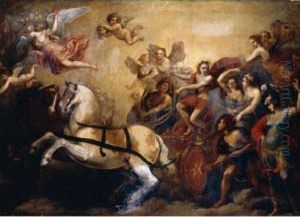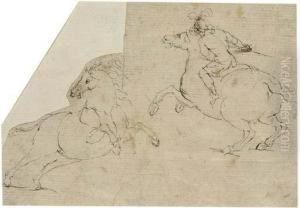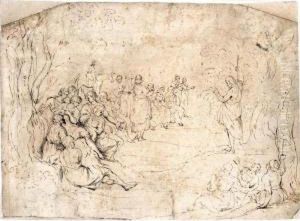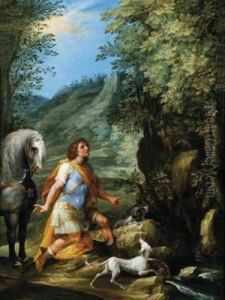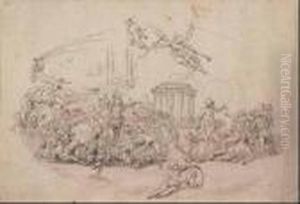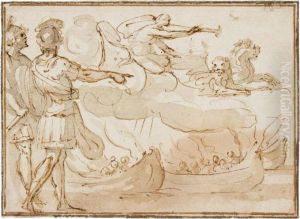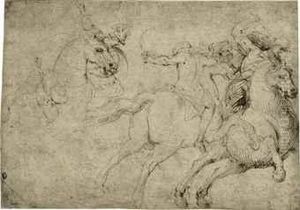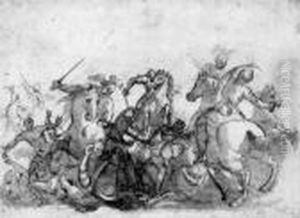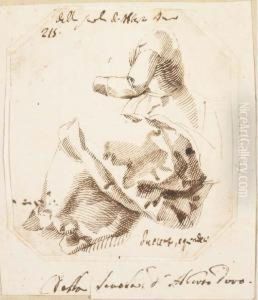Francesco Allegrini Paintings
Francesco Allegrini was an Italian painter of the Baroque period, active mainly in his native city of Gubbio, as well as Rome. Born in 1587 in Gubbio, in the Umbria region of Italy, he was part of a family of artists; his father was the painter Flaminio Allegrini, and he was the brother of Cristofano Allegrini, also a painter. Francesco's son, Flaminio Allegrini II, continued the family tradition, becoming an artist as well.
Francesco's artistic style was influenced by the works of the prominent painters of his time, including the dynamic compositions and dramatic use of light and dark of the great Caravaggio. He was also influenced by the works of the Carracci family and their academy in Bologna, which promoted a return to classical balance and restraint in art as a response to the excesses of Mannerism.
Allegrini worked on various commissions in Rome, including frescoes and altar pieces for several churches. His works include frescoes in the church of San Silvestro in Capite and in the cloister of San Salvatore in Lauro. He was also active in Gubbio, where he painted for local churches and the city's nobility.
Despite his contributions to the art of his time, Francesco Allegrini did not achieve the same level of fame as some of his contemporaries. However, his works were appreciated for their clarity of composition, vivid color palette, and his ability to convey religious themes with emotional depth and sincerity.
Francesco Allegrini passed away in 1663. His works can still be seen today, offering a glimpse into the Baroque era's rich artistic landscape, and they remain a testament to his skill and dedication to the art of painting.

